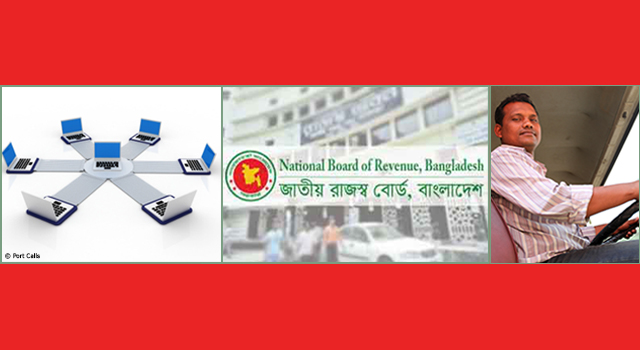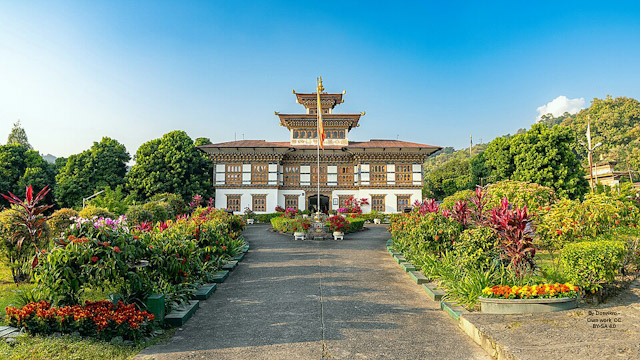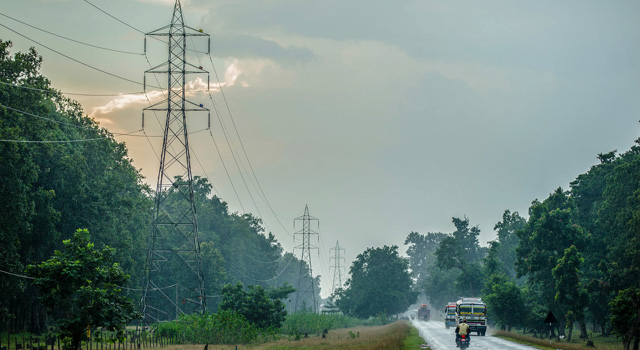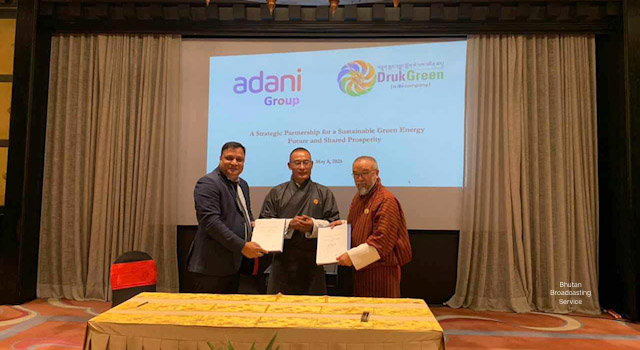
Commentary: Powering the Clean Energy Transition
9 August 2022
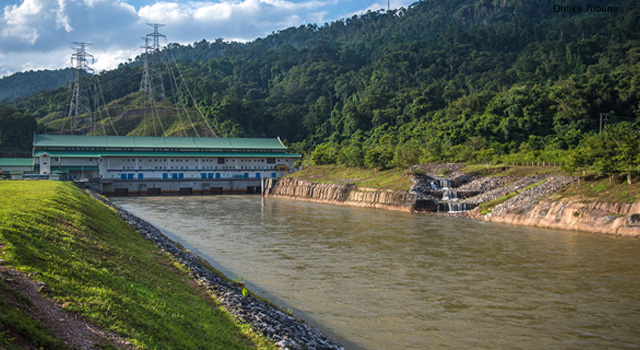
Climate change is a daunting development challenge that transcends borders. It therefore calls for greater global consensus and cooperation along with bold targets to tackle its widespread and multidimensional consequences. This commentary appears on the Development Asia website.
Powering the Clean Energy Transition
By Pradeep Tharakan
The coronavirus disease (COVID-19) pandemic slowed down development progress across the globe, but the pace of climate change only accelerated.
Historically, Southeast Asia’s greenhouse gas (GHG) emissions have been low compared with those of advanced economies. However, it has one of world’s fastest growing rates of emissions, second only to South Asia, because of excessive reliance on fossil fuels. If left unmanaged, the current emissions trajectory will bring far-ranging environmental, economic, and social repercussions, affecting many lives. The World Health Organization says more than a third of the seven million premature deaths linked to air pollution annually occur in Southeast Asia. The upswing in GHG could lead to a temperature rise beyond the 1.5-degree limit, which will unleash more severe consequences. Thus, it is imperative for the region to decouple its economic growth from fossil fuels. A critical aspect across many of the net-zero pathways is reducing the carbon intensity of the power sector in the near to medium term since other sectors, such as transport and the industrial sector, will take a much longer time to decarbonize.
At the same, Southeast Asia is highly vulnerable to the effects of climate change. Typhoons, flooding, and drought have become more common, intense, destructive, and increasingly costly. Thus, the region must simultaneously decarbonize while also preparing to adapt to weather extremes and rising sea levels.
This brief is based on the 18th Policy Actions for COVID-19 Economic Recovery (PACER) Dialogue, Accelerating Clean Energy Transition in the New Normal, organized by the Asian Development Bank (ADB).
Power Shift: Problems and Prospects
While the pandemic led to substantial economic contraction, emissions fell modestly and are expected to rebound to pre-pandemic levels as economic activities gather pace. In Southeast Asia, energy demand is rising considerably in line with economic growth, demographic expansion, and rapid urbanization. A key driver of power consumption is the use of air conditioning, which is expected to surge as incomes and temperatures rise.
The abundance of solar, wind, biomass, geothermal, and hydro resources in the region presents vast opportunities for tapping clean energy sources. The region has been ramping up its renewable power generation capacity, which reached 86.7 gigawatts (GW) in 2020, according to the International Renewable Energy Agency (IRENA). It is targeting a 23% share of renewable energy in its total primary energy supply and 35% in its installed power capacity by 2025.
These targets are relatively modest and insufficient to meet the goals set at the Paris Declaration, which requires countries to attain net zero emissions performance by around mid-century. And attaining even these modest targets requires countries to step up renewable energy expansion significantly as well as transmission grid upgrades to absorb large-scale deployment of variable energy.
Moreover, the region remains a hotspot for coal given its low cost and indigenous supply. In addition to the nearly 80 GW of operating coal-fired power plants in the region, several more are in the pipeline. It is worrying that some countries still use subsidies to support the coal sector, which undermines the competitive position of clean technologies.
In summary, while many Southeast Asian economies have made net-zero pledges, their climate targets fall short of mitigating the serious threats they face. Meanwhile coastal populations are increasingly vulnerable to extreme weather conditions, and many have their livelihoods threatened, owing to the mounting frequency and intensity of climate hazards. Concerted and swift measures are urgently needed to support effective mitigation and adaptation measures.
Policy Prescriptions
Create an enabling environment for a clean energy transition
Governments play a vital role in overcoming barriers and creating enabling conditions for a clean energy transition and in ensuring efficient and effective planning and encouraging new market players and alternative business models.
The development of a robust framework for the shift to renewables includes sound power development plans, long-term decarbonization strategies, resource assessments, and road maps for an equitable transition. As the financing needed to usher in this transition is massive, governments must create a conducive environment for private investments in transmission and distribution grid upgrades and storage systems. Carbon financing instruments and climate finance could also bridge the huge financing gap by redirecting investments to clean technologies and encouraging energy efficiency.
Enable energy efficiency at scale
Coping with growth in energy demand requires supply-side interventions complemented by demand-side efficiency improvements. While countries in the region have developed energy efficiency programs, including in the form of regulatory requirements, information provision, and a combination of economic, financial, and fiscal incentives, some are lax in enforcing their standards. This highlights the need for harmonization across the region to scale up energy efficiency and facilitate the trade of more efficient technologies.
It is also vital to support the development of energy service companies (ESCOs), which design, build, and arrange financing for projects that save energy, reduce energy costs, and decrease operations and maintenance costs at their customers' facilities.
Enable and expand access to green finance Meeting the region’s 2025 target of 23% renewables in the primary energy supply requires an estimated annual investment of $27 billion (IRENA). Investments of a much higher-scale will be needed to attain net-zero emission targets by mid-century. Public sector funding alone is not sufficient to fill the funding challenge, which has become more acute in the wake of the pandemic.
Financial instruments have evolved (e.g., thematic bonds, blended finance, green and climate funds) and expanded to unlock various sources of capital for sustainability-oriented investments, including renewable energy. One tool, the transition bond, is designed to support "brown" companies in carbon-intensive or heavily polluting sectors in their shift to "green" or environmentally sustainable modes of operation.
Recognizing the financing shortfall for climate action and green infrastructure, ADB launched the ASEAN Catalytic Green Finance Facility (ACGF) in 2019. The ACGF provides ASEAN members with technical assistance and access to over $1 billion in loans from cofinancing partners. It focuses on projects that promote renewable energy, energy efficiency, sustainable urban transport, water supply and sanitation, waste management, and climate-resilient agriculture. ADB is also helping public and private sector issuers in the countries in the region with their maiden green and climate bond (thematic bonds) issuances.
Enhance regional power trade
In the face of skyrocketing oil and gas prices, countries must prioritize energy security and resilience. Reorienting power systems toward renewable energy and regional connectivity can reduce dependence on fossil fuel imports, allow for better management of intermittent renewables by accessing flexible resources, and lower the risk of curtailment by providing access to larger and diverse regional demand across countries.
The Lao People’s Democratic Republic–Thailand–Malaysia–Singapore Power Integration is currently the only multi-country power trade project in operation in the region. Intergovernmental platforms, including the ASEAN Power Grid initiative and the Greater Mekong Subregion Regional Power Trade Coordination Committee, are facilitating discussions on greater integration of power systems.
ADB has been exploring opportunities for cross-border interconnections and power development planning in the region through its series of technical assistance activities and by providing financing for priority projects. Through ADB's support, the Greater Mekong Subregion Transmission and Generation Masterplan was developed, and capacity building activities for country energy and environmental planning agencies and utilities are being conducted across the region.
Support accelerated retirement and repurposing of fossil fuel-based power generation assets
Accelerating the retirement of operating coal-fired power plant capacity is essential for decarbonizing power systems in the region. ADB is developing the Energy Transition Mechanism (ETM) as a market-based approach to accelerate the transition from fossil fuels to clean energy. The initiative is being piloted in Indonesia, Philippines, and Viet Nam. It will mobilize the public and the private sector—governments, multilateral banks, private sector investors, philanthropies, and long-term investors—to finance country-specific ETM funds that will seek to retire coal power assets on an earlier schedule than if they remained with their current owners.
Support clean energy deployment as an economic recovery tool
With the worsening impacts of climate change, a clean energy transition should be central to COVID-19 recovery programs in the region. Investing in clean energy infrastructure has been shown to result in a larger increase in local jobs and local economic benefits than investments in fossil fuels. And according to an IRENA study, 32% of workers in renewable energy are women, compared with only 22% in the oil and gas industry.
Raise the ambition of climate policies and expand global cooperation
Climate change is a daunting development challenge that transcends borders. It therefore calls for greater global consensus and cooperation along with bold targets to tackle its widespread and multidimensional consequences. With the stark divides in resources and emissions contributions, equity must be at the core of a comprehensive international response. Wealthy and high-emitting nations must support the mitigation and adaptation needs of developing countries, which have historically contributed the least to climate change yet suffer disproportionately from its impacts. Given the unprecedented capital required for climate action, mobilization of additional financing can be done by leveraging Southeast Asia’s position in international negotiations.
From Pledge to Progress
Countries in the region have taken significant strides in embracing clean energy.
In Cambodia, a national solar park with 100-megawatt (MW) capacity was developed with technical and financial assistance from ADB. This pathbreaking public–private partnership transaction catalyzed the rollout of more solar photovoltaic projects in the country, resulting in record low prices. From 2016 to 2021, solar power generation capacity grew from practically none to 377 MW, representing 12% of the total installed capacity. ADB is also helping the country expand the market for energy-efficient technologies by establishing a policy and regulatory framework for energy efficiency and upgrading infrastructure with more energy-efficient equipment, materials, and designs.
As a production powerhouse with soaring energy demand, Viet Nam has capitalized on opportunities in renewables, becoming the first mover in floating solar and demonstrating success in rooftop solar, which contributed to 48% of its solar capacity in 2020. It also boasts favorable conditions for wind power, with installed capacity expected to grow to more than 20 GW by 2045. However, the grid infrastructure has not been able to keep up with the rapid growth of renewables, resulting in production losses. To meet the demand for a sustainable and stable transmission system, the Law on Electricity was amended to promote the involvement of private investors in the construction of the transmission grid. Moreover, Viet Nam’s Power Development Plan 8, which incorporates its net-zero ambition by 2050, aims to have no new coal-fired power plants except those already under construction or planned for completion by 2025 or sooner, and prioritize natural gas power projects over coal.
In Indonesia, the strategy to achieve carbon neutrality by 2060 includes increasing the installed capacity for renewables, promoting the use of energy-efficient technologies and electric vehicles and stoves, deployment of smart grids to manage intermittent renewable energy, halting approval of new coal plants after 2023, and accelerating retirement of coal-fired power plants with support from ADB’s ETM and other sources.
A key element of the Philippines’ decarbonization plan is also to reduce coal power plants in its energy sector. In 2020, the government announced a moratorium on new coal plants and is collaborating with ADB on the ETM. The country’s climate agenda is underpinned by its Sustainable Finance Roadmap, which aims to spur green and climate investments from various sources.
Recommendations
Take a programmatic approach to secure better coordination and sustained impact
The clean energy transition entails a series of interlinked actions, from setting clear plans and enabling policies to developing project investment pipelines and forging partnerships that deliver concurrently on these key imperatives: access to renewable energy, energy efficiency, and coal phaseout.
Common limiting factors, such as inadequate capacity of the grid infrastructure, should be part of planning to avoid project delays. The pathway to net zero can also strongly benefit from multi-stakeholder coordination at the local, national, and international levels, which would facilitate speedy project design and implementation and access to low-cost financing.
Consider competitive tendering for optimal pricing
Some Southeast Asian countries are increasingly introducing local content requirements to spur local job creation, develop domestic production, and promote technology transfer. However, their imposition can lead to reduced competition and efficiency losses. On the other hand, a global auction scheme facilitates transparency and lowers cost through a competitive process. A phased approach with competitive bidding followed by progressively requiring more local content could help pave the way for a rapid scale-up of low-cost renewables while building local industry in the medium term.
Build resilience through adaptation investments and regional connectivity
In tandem with decarbonization efforts, countries need to reduce their exposure to the worsening impacts of global warming and increasing physical climate risks by building more resilient energy infrastructure. Regional power trade can foster resilience and energy security. It helps improve reliability and increase the share of and synergies among clean energy resources, thereby insulating economies from fossil fuel price shocks.
Account for just transition activities in the mobilization of climate finance
Beyond infrastructure investments, funds must be mobilized to deal with the socioeconomic impacts of the clean energy transition. In light of the COVID-19 crisis, a green recovery and support for vulnerable groups must go hand-in-hand. Thus, assessing resource needs for climate action should consider investments in reskilling affected workers and communities, as well as support for small enterprises to help them seize new opportunities in the green economy.




